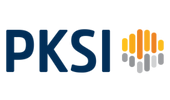Predictive Workforce Analytics: The Road to a More Diverse & Inclusive Workplace
- July 1, 2021
- Posted by: Admin
- Category: Uncategorized

Diversity, Equity, and Inclusion (DE&I) efforts foster innovation in the workplace and play a vital role in creating a vibrant work culture. It remains one of the most critical priorities for organizations and their HR teams today, in part because candidates and employees are making it a priority. According to a survey done by Glassdoor 67% of job seekers consider workplace diversity an important factor when considering employment opportunities, and more than 50% of current employees want their workplace to do more to increase diversity.
However, most organizations are still far from meeting their short-term and long-term diversity goals.
Despite their best efforts many organizations struggle in meeting their diversity goals. In such a scenario, predictive workforce analytics may be just what organizations need to infuse new life into their DE&I projects. If this sounds like you, we are here to help with an in-depth view of how you can use such tools to boost diversity in your workplace. Read on:
Pinpoint diversity gaps in your existing workforce
The best way to begin a DE&I enhancement initiative is to first get a 360-degree view of the gender and ethnic composition at your workplace. Going beyond traditional methods of measuring diversity, in depth data analysis will tell you things like:
- Do you have employees from underserved communities across levels in your company?
- Does your company also have members of the LGBTQ+ community and people living with disabilities?
For a truly diverse, balanced workforce, a company should have people from diverse backgrounds and hire people beyond the conventional demographics.
With workforce analytics tools, companies can collect diversity metrics and understand the overall makeup of the workforce. This will help to identify gaps that need to be filled, make the case for earmarking resources to address these gaps and assist you in forming new, better diversity goals.
Create equitable compensation programs
Many large companies struggle to do away with the gender pay gaps, and this is where predictive workforce analytics tools can be of assistance. It can help you analyze for unconscious bias in the organization itself and use unified compensation data to craft better pay structures.
Lower unconscious bias in the recruitment process
Unconscious bias continues to be a pressing issue even in the most acclaimed organizations. Battling this problem becomes a little less challenging when you have AI and machine learning-powered predictive workforce analytics tools to aid you during the recruitment process.
Using advanced analytics you have hard data to guide your hiring decisions. The sourcing of candidates becomes more streamlined and freer of bias.
Such tools can also go a step further by searching candidate profiles and matching these to those of the best performers in your organization. Bad hires are costly and reduce team productivity. Using analytics to identify top candidates results in better hires, lower attrition, and better business results.
Final words
Numerous studies have proven that a diverse, inclusive workforce contributes to enhanced business success. HR specialists who are responsible for helping their companies meet their diversity goals have the potential to transform the company culture and lead to better business outcomes.
To meet their goals more and more executives are turning to advanced workforce analytics companies to support their HR teams and build a workforce that is inclusive in the truest sense of the word.
Author’s Bio: The writer is an HR generalist, and this article discusses the important role of predictive workforce analytics tools in creating a diverse & inclusive workforce.


